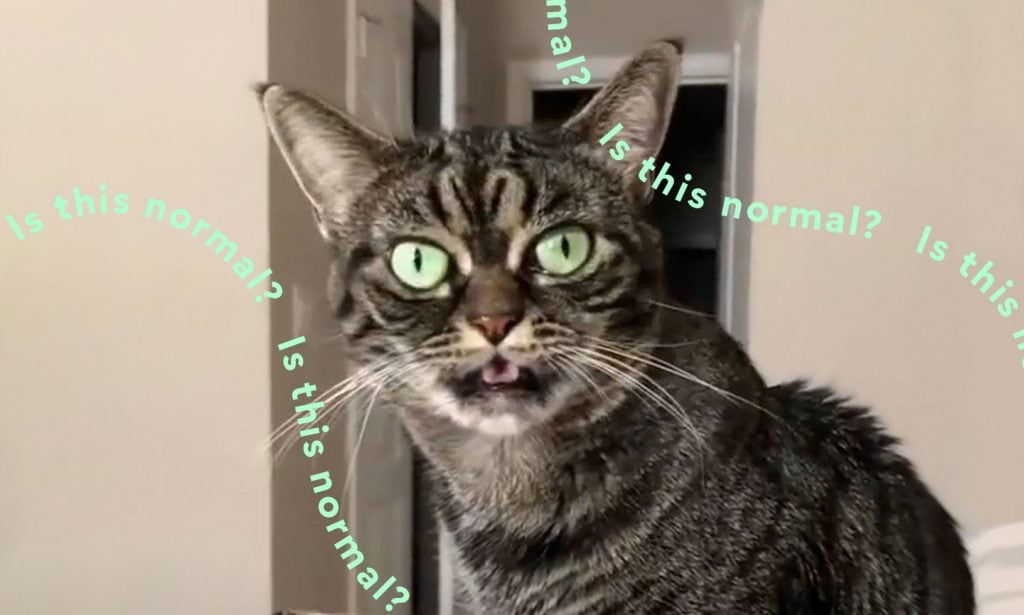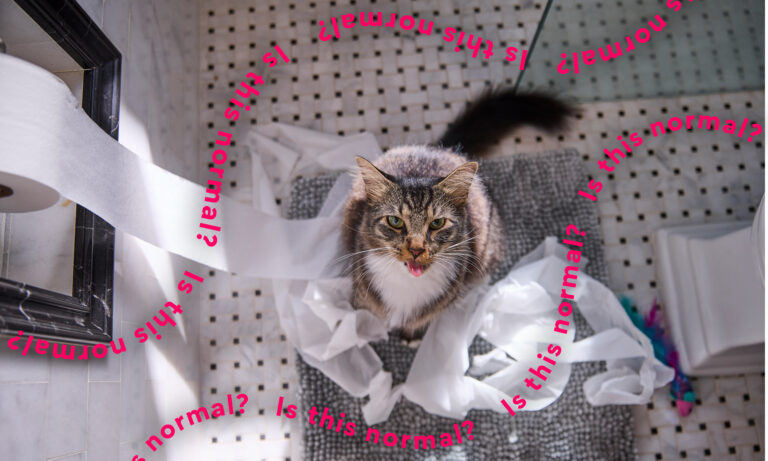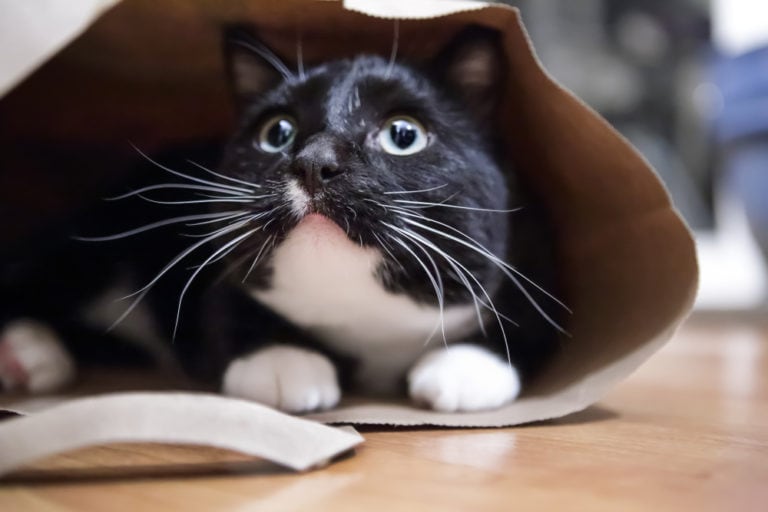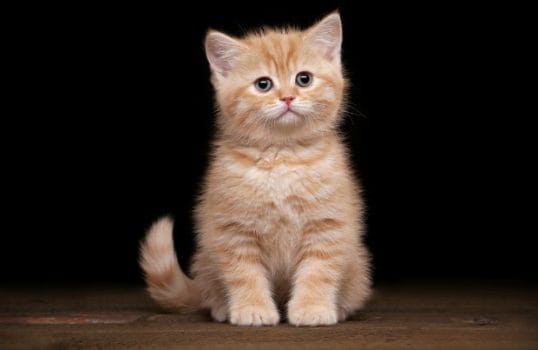Q: My cat randomly makes the weirdest face after smelling something. Their mouth just hangs open and they look super confused! Is this normal?
A: When a cat keeps their mouth open after smelling something—almost as if they’re making a “stinkface”—they’re exhibiting something called the flehmen response. This odd behavior is, in fact, normal (even a little funny to watch!), and it actually helps them to smell whatever it is they’re smelling.
What Does the Flehmen Response Look Like?
The flehmen response gets its name from the German word flehmen, which means “to curl the upper lip.” In addition to curling back their upper lip, a cat may curl their tongue, or show their front teeth, while others simply look perplexed or disgusted. You can see the flehmen response in action here:

Courtesy of Grumpy Kitzia/Instagram
What Purpose Does the Flehmen Response Serve?
Though it’s a funny thing to witness, Dr. Sandra Mitchell, DVM, DABVP (Feline Practice), says this oddball cat behavior actually serves an important purpose: “funneling the smell towards a unique sensing organ called the vomeronasal organ, which helps it more closely analyze the odor.”
The vomeronasal organ, also called the Jacobson’s organ, is an olfactory organ located in a cat’s mouth, specifically above the hard palate between their septum and the roof of the mouth, just behind the front incisors. It contains tiny ducts that lead up to the nose.
When a cat exhibits the flehmen response, “scents are solubilized in saliva and the tongue flicks this up into the gland, which helps with more sensitive scent analysis,” says Dr. Marc Bercovitch, DVM, DACVIM, of Veterinary Specialists of Birmingham, Alabama.
Translation? When your cat opens their mouth after smelling something, it’s basically their way of smelling in HD. The flehmen response is “a combination of tasting and smelling,” according to Dr. Mitchell, allowing the scent to reach their special receptors in the roof of their mouth.
It’s worth noting that domestic cats aren’t the only animals who exhibit this unique behavior. It can also be seen in other animals:
- Big cats (such as lions and tigers)
- Horses
- Giraffes
- Rhinos
- Llamas
- Hedgehogs
What Triggers the Flehmen Response?
Cats have a much stronger sense of smell than humans, but there are certain scents that are known to trigger the flehmen response—“especially unusual or new scents,” according to Dr. Bercovitch.
Dr. Mitchell adds that the flehmen response “can be triggered by any smell that the cat finds interesting, but it’s most commonly seen when one cat detects the odor of another cat, or even another animal.”
The Jacobson’s organ was actually designed to help male cats locate female cats in heat by analyzing the pheromones in their urine. “Male cats are believed to be more prone to this response—especially in response to female sex hormones or pheromones,” Dr. Bercovitch says.
Is the Flehmen Response Normal in Cats?
You may worry about your pet’s health the first time you see them open-mouth breathing—especially if your cat is hovering over something you can’t see with their mouth hanging open for a long time. Rest assured, this stinkface is a totally normal part of cat health and behavior, and it’s usually not cause for worry. However, if you think your cat is experiencing labored breathing, this could be a sign of respiratory distress, and you should contact your vet immediately.
Pet parents may also think that their cat’s funny face or disgusted-looking lip curl is an indication that they don’t like what they’re smelling, but in fact, it’s likely just the opposite.
“The cat is attracted to the smell and is going to an extra effort to get a good whiff!" Dr. Mitchell explains. “The look on the cat's face is more a function of how they have to move their mouths to get the air to flow to the vomeronasal organ than a judgment on the smell itself.
How Can I Get My Cat to Do the Flehmen Response?
Any cat—regardless of breed, age, or sex—is capable of exhibiting the flehmen response. While bringing home a fresh urine sample from another cat is probably not something you want to do (at least, we hope not!), you can try bringing in a new scent they might enjoy, like catnip.
To really get your cat’s nose working (and add some fun enrichment to their day), add loose catnip to a refillable toy.
It’s worth noting that some things are on the no-no list for cats to smell or eat—such as certain plants, foods, essential oils, and household items that can be toxic—so stick to a safe and interesting scent.
Get more ideas on how to engage your cat's senses.
Explore more weird cat behaviors:
Share:











